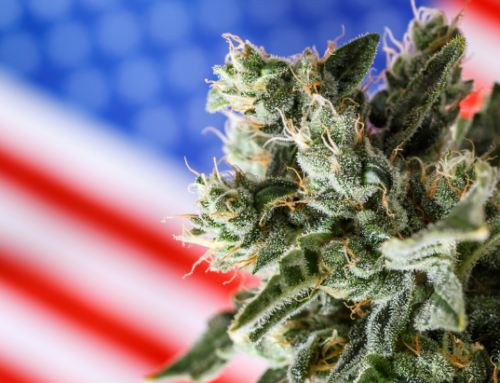LEED v5 and the Low Cost of Renewable Energy Create a New Momentum for Green Building
July 2, 2025
Despite the abrupt shift in U.S. energy policy, the numbers don’t lie. The cost of wind and solar energy is less than the cost of natural gas. This long-awaited advantage could pave the way for a boon in green building, helping developers to pitch the bottom-line benefits of clean power while promoting a healthier environment both indoors and out.
Renewable energy beats gas on cost
Somewhat ironically, a new flood of cheap natural gas was the initial force that began pushing coal out of the picture in the early 2000s. The availability of low-cost gas also tamped down enthusiasm for wind and solar energy. During that period, ratepayers who wanted to support clean power typically had to pay a premium on their utility bills.
In more recent years, the cost profile has flipped alongside technology improvements in wind turbines and solar modules, among other factors. While the cost of gas remains relatively low, today renewables are lower still.
Analysts use a measurement called the “levelized cost of energy” (LCOE) to compare the price tag of power generation technologies across their entire lifespan. According to the newly released 2025 LCOE+ report from the financial advisory firm Lazard, renewables are the least expensive form of power generation today.
“As such, renewable energy will continue to play a key role in the buildout of new power generation in the U.S.,” according to Lazard. “This is particularly true in the current high power demand environment, where renewables stand out as both the lowest-cost and quickest-to-deploy generation resource,” the report reads, referring to the surge in electricity demand resulting from the data center construction boom.
That growing demand has already raised concerns that the planned retirement of older gas and coal power plants will be delayed, and that a whole new fleet of gas power plants will be constructed. The emphasis on additional power generation from fossil fuels aligns with the Donald Trump administration’s energy policy, but it is out of step with circumstances on the ground.
The U.S. solar industry in particular has already proven it is well equipped to add more capacity to the grid. Solar and storage alone accounted for 84 percent of all new power generation capacity in the U.S. last year, totaling 50 gigawatts, the Solar Energy Industries Association reported in March. At the start of the year, the U.S. Energy Information Agency also took note of the strong performance of solar and wind, stating: “We expect that U.S. renewable capacity additions — especially solar — will continue to drive the growth of U.S. power generation over the next two years.”
The appeal of renewable energy is a matter of simple economics. The installed cost of new solar arrays and wind farms is lower than the cost of building new gas power plants, and both solar and wind projects can be constructed in less time.
As renewables get cheaper, countries around the world are also seeing stronger momentum toward building electrification, or replacing systems in buildings that rely on fossil fuels like natural gas with electrically-powered alternatives. That could spell good news for the green building sector, which is already having a busy year.
Green building and the bottom line
The U.S. Green Building Council is among the certifying agencies credited with bringing transparency and reliability to how we define a “green” building. Since launching 25 years ago, the globally recognized organization has emphasized the bottom-line benefits of sustainable design and construction through the longstanding LEED (Leadership in Energy and Environmental Design) certification program.
LEED is now used in 180 countries globally, with more than 100,000 commercial buildings certified over the past two decades. “Notably, LEED buildings achieve a 21.4 percent higher average market sales price per square foot over non-LEED buildings; average 11 percent higher rent rates; attract more favorable and stable financing options; and reduce water, energy and waste by more than 20 percent,” according to the U.S. Green Building Council.
The organization updates its standards periodically to reflect current trends and released the latest version, LEED v5, in April. Developed with feedback from thousands of green building stakeholders, the new standards reflect the growing interest in sustainable construction by investors and developers globally.
While features that reduce a building’s carbon footprint still account for about 50 percent of the credits needed for certification, the new standard reflects a more holistic approach that recognizes public awareness of climate impacts and ecosystem conservation, among other emerging concerns.
“LEED v5 focuses on impact areas that touch decarbonization, human and ecological health, and resilience,” an April press announcement from the U.S. Green Building Council reads. “The new version further defines what it means to be a high-performance building today, creating even greater investment potential.”
The new requirements — including whole-building carbon assessments, indoor air monitoring, and biodiversity restoration, among others — are already standard practice for some architectural and engineering firms, but formalizing them could speed more widespread adoption. “These aren’t new ideas for us,” Rebecca Aarons-Sydnor, who heads up sustainability for the firm Mead & Hunt, wrote in a bog post earlier this year. “We’re glad to see them promoted by LEED as they foster more sensitive, resilient, and healthier environments.”
Developers are already planning new projects around the updated standards. The mid-sized firm Carr Properties, for example, recently received local approval for plans to redevelop an old office building in Clarendon, Virginia, as a LEED Gold-certified multifamily property with ground-floor retail space.
The redeveloped building will use electric heat pumps, eliminating the need for on-site fuel combustion systems and allowing the building to meet 98 percent of its source energy needs with electricity. Though the new complex is near adjacent to a commuter rail station and a popular walkable neighborhood, the company also plans to reuse the underground parking area and set aside 13 of its 325 spaces for electric vehicle charging. Construction is set to start next year.
Making LEED better with electrification
As the Carr project demonstrates, electrification presents developers with significant opportunities to reduce, if not eliminate, greenhouse gas emissions from a building, a clear benefit to both the occupants and the nearby community.
All else being equal, advocates for green building and electrification can be assured that their efforts to create a more sustainable built environment will be supported by a grid that includes more renewable energy, not less. However, in today’s fraught political environment, nothing is guaranteed. Business leaders who value access to renewable energy on the grid will need to raise their voices in support of local, state and federal policies that prioritize it.
Search
RECENT PRESS RELEASES
Related Post




